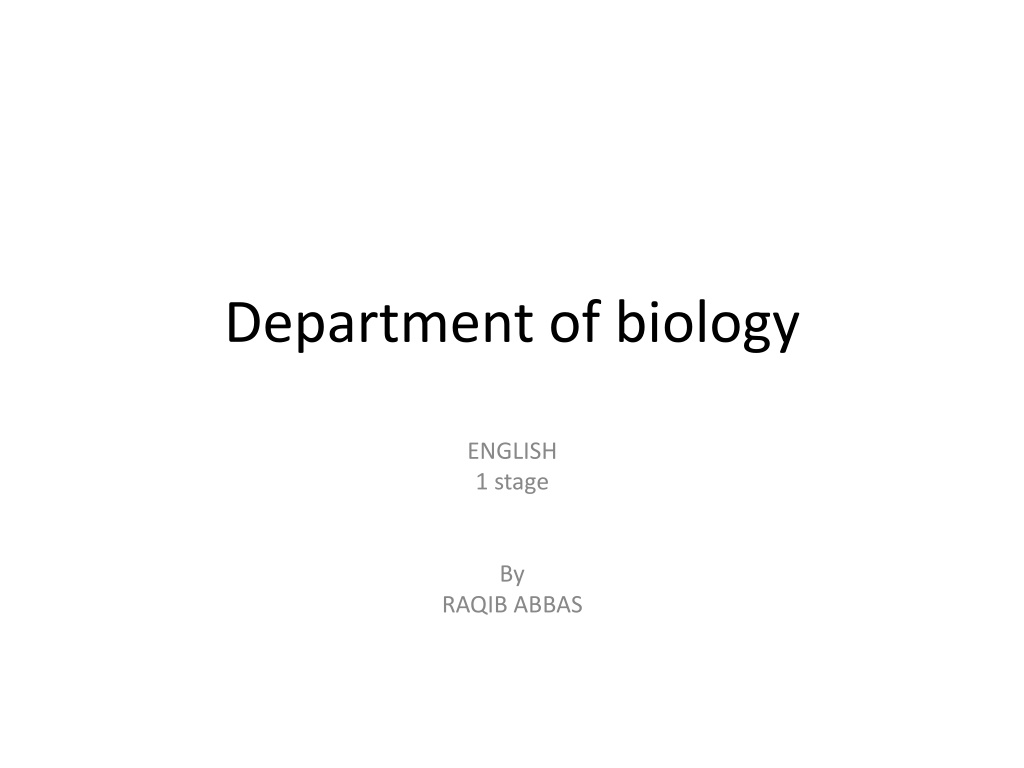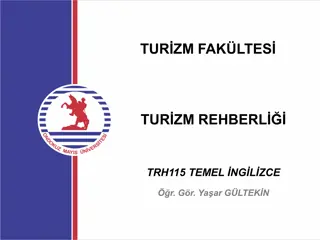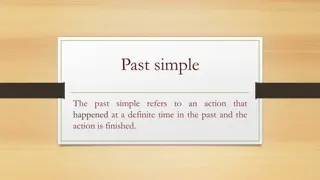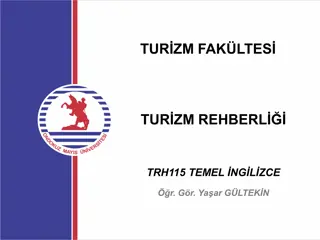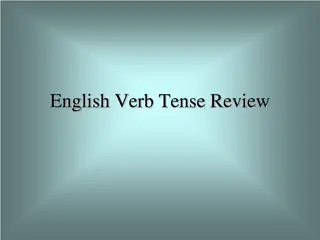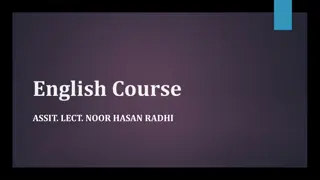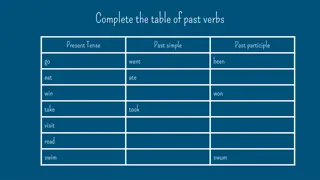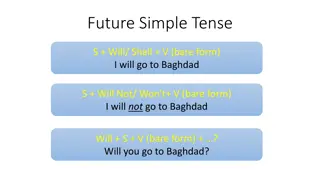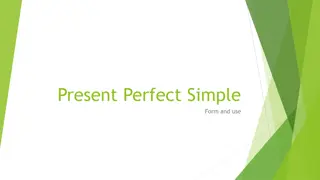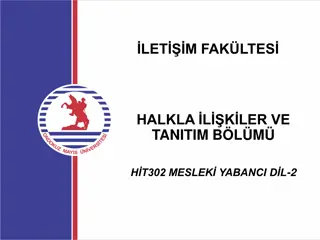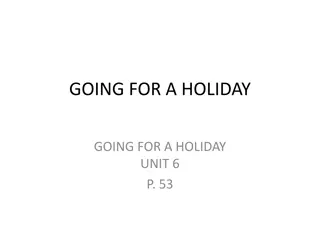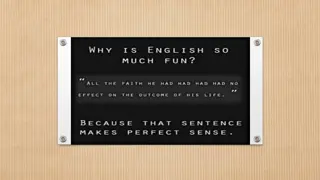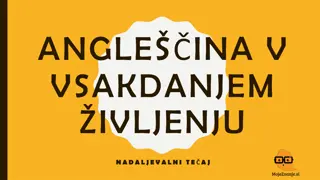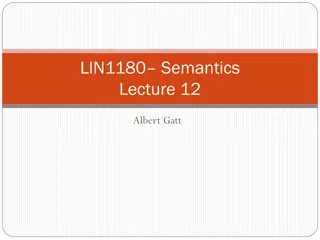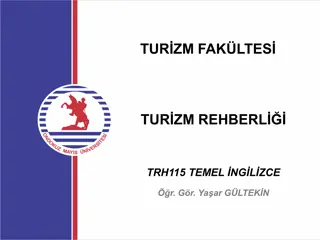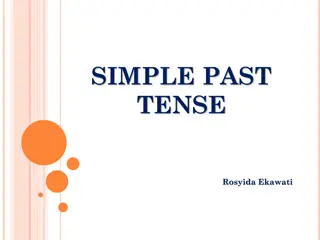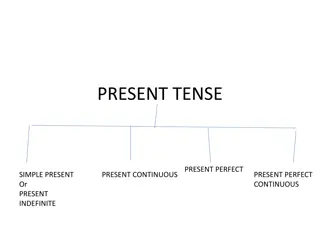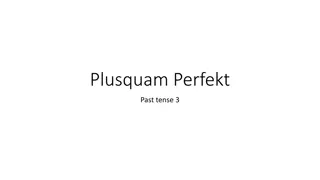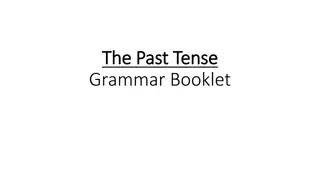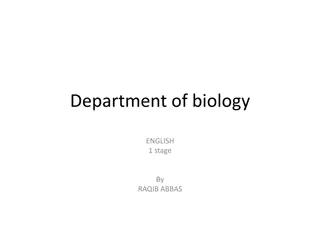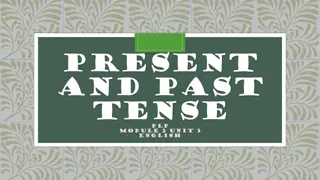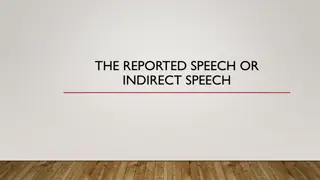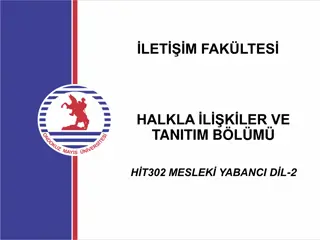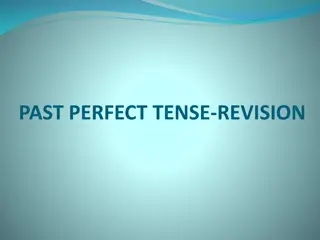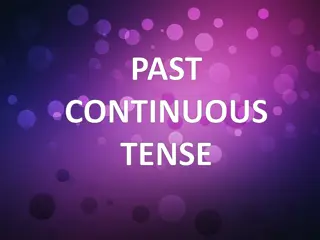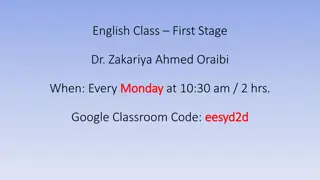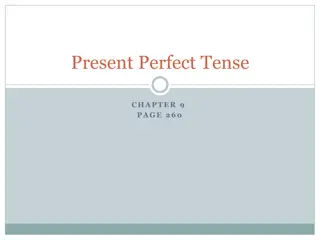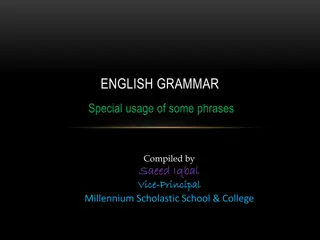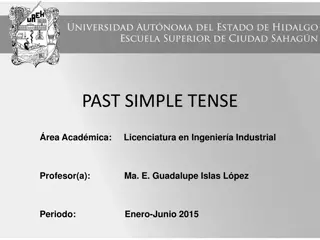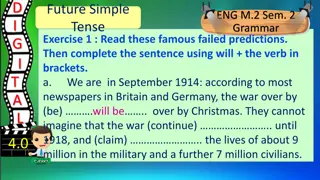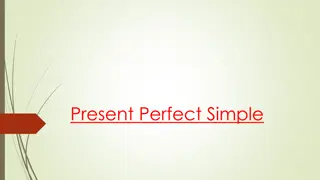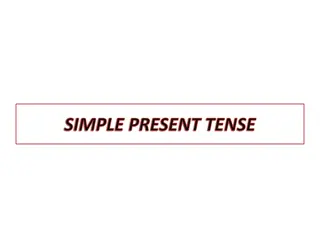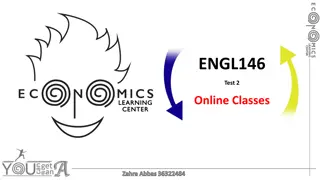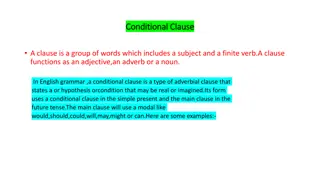Understanding Past Simple Tense in English Grammar
The past simple tense is used to describe completed actions or events that happened at a specific time in the past. Regular verbs form the past simple by adding "-ed", while irregular verbs have unique past tense forms. The structure for negative and question forms involves the auxiliary verb "did". Examples and illustrations further explain the usage and formation of past simple tense in English.
Download Presentation

Please find below an Image/Link to download the presentation.
The content on the website is provided AS IS for your information and personal use only. It may not be sold, licensed, or shared on other websites without obtaining consent from the author. Download presentation by click this link. If you encounter any issues during the download, it is possible that the publisher has removed the file from their server.
E N D
Presentation Transcript
Department of biology ENGLISH 1 stage By RAQIB ABBAS
Past simple The past simple tense is used to describe completed actions or events that occurred at a specific time in the past . The past simple tense is usually formed by adding the suffix -ed to regular verbs. However, irregular verbs have their own unique past tense forms. Here's the basic structure: irregular verbs: Verbs that do not follow the regular -ed pattern. They have unique past tense forms. Regular verbs: Base form + -ed walk walked play played talk talked go went eat ate buy bought I walked to the store yesterday. She ate breakfast at 8 a.m. He lived in Paris for five years. She played the piano when she was a child. She visited her grandmother last weekend. They watched a movie together yesterday. He ate fish for dinner last night. We went to the beach every summer when we were kids.
Negative The negative form of the past simple tense is used to express actions or events that did not happen in the past .. Structure To form the negative past simple tense, we use the auxiliary verb "did" (in its past tense form) followed by "not" (contracted to "didn't") and the base form of the main verb. S +did + not + base form of the verb I didn't walk to school yesterday. She didn't play tennis last weekend. He didn't go to the party on Friday. We didn't see that movie last night. She didn't call me yesterday. We didn't go to the party last night. He didn't eat breakfast this morning. They didn't visit the museum on Sunday. She didn't finish her homework on time. They didn't travel to Europe last summer. He didn't buy the new phone yesterday.
Question The question form of the past simple tense is used to inquire about actions or events that happened at a specific time in the past. Structure To form questions in the past simple tense, we use the auxiliary verb "did" (in its past tense form) followed by the subject and the base form of the main verb. Did + subject + base form of the verb Did you walk to school yesterday? Did she play tennis last weekend? Did he go to the party on Friday? Did we see that movie last night Did you finish your homework last night? Did they visit their grandparents over the weekend? Did she enjoy her trip to Paris? Did you have fun at the concert?
some Some : it is used with positive sentences ,offering and requesting. Ex: I want some rice. Would you like some tea? Can you give me some information? I need some help with cleaning my house. Can I borrow some money? There is some milk left in the fridge
Any Any : it is used with negative and interrogative statements. Ex: I don t want anyone. Do you have any tea? Is there any information available? I don't have any chocolate left. Do you have any plans for the weekend? He didn't give me any details. Is there any way we can finish this earlier?
